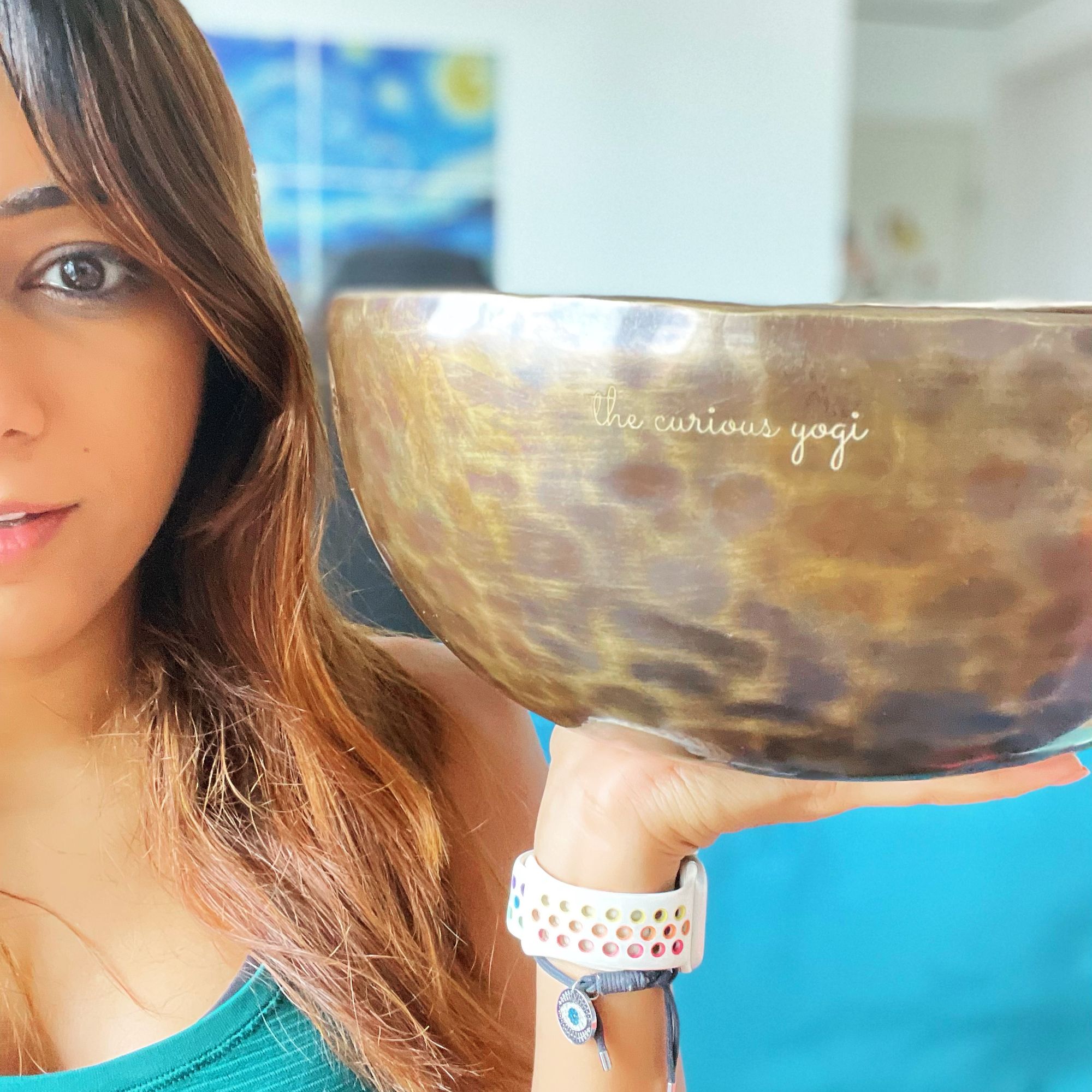Singing bowls - also called Tibetan or Himalayan singing bowls - are instruments that produce sound and vibration when played with a mallet or striker. These ancient, multi-harmonic instruments are often linked with Buddhism or other spiritual practices due to their use within meditation practices. They are generally made from an alloy of various metals. Five to seven different metals can be found in a single singing bowl. Singing bowls also come in a variety of sizes, shapes, and styles. Different singing bowls can also have different tones and pitches, and even correlate with specific chakra.
The first time I was introduced to a Singing Bowl was at a Sound Bath at Vikasa Yoga in Thailand. It was an incredibly moving & emotional experience. There were perhaps 50 different bowls/musical instruments that day and my body was feeling all sorts of vibrations. It intrigued me so much that I immediately wanted to know more. I had gone in with zero expectations.
Through COVID, I joined Sound Bowl certification in Singapore and did all three levels offered. Slowly, I started building a small Singing Bowl collection (these can cost a fortune) and recently, I have been doing private Sound Baths - more for charity and practice than anything else. I integrate these into my monthly Full Moon Meditations on The Curious Yogi.
So, here are a few questions you can ask yourself or use it as a checklist, when it comes to getting your first few singing bowls. :-)
- The Purpose: Why are you planning to get this bowl? Is it cause you're curious, you want to collect/decorate, you don't really believe in it and want to figure out if it really works, you want to include it in your yoga/meditation/personal ritual etc. Answering this will help set a clear intention - as believe me - once you go shopping for these bowls, you will get inundated and confused very quickly.
- The Mood: Even if you have never attended a sound bath, you would agree that music helps set the mood - imagine house parties, romantic candlelight dinners, or a musical score in a psychological thriller. Each sound bowl has a frequency or vibration. Some are uplifting, some are grounding, some are very chirpy, some are a bit solemn. So you need to have an idea and ask yourself - if you have a preference.
- Pairing with Yoga or Meditation practice: According to the Vedic and the Tibetan system, sound/frequency/vibrations are associated with different energy centers of our body or the chakra system. Both these system associate different tones to each chakra point. If you want to, for example, use it for grounding at the beginning/end of a yoga or meditation practice, then an F tone (C tone in the Vedic system) is a great idea as it's associated with the Muladhara or the Root Chakra. You can use any finetuner app from the App store to listen to the tone of the bowl. If you're building a collection, I'd recommend sticking to one of these systems so you can build a collection with different tones.

4. Feel your intuition: It may sound silly but we all have a sixth sense about things. When you're going shopping for your bowl, be in a relaxed mood and see what bowl calls out to you. Play each bowl a few times, with different strikers and see how it makes you feel. Go with your emotion. :-)
5. Learn about the metals: Finally, ask questions about the metals and how the bowls are made. Some bowls will be single metal/alloy bowls and very shiny with a sharper sound. They will also be quite inexpensive. Then you will have bowls that look more ancient made of 7 alloys/metals with deeper sounds and vibrations that last longer and are more complex. Finally, you will have some bowls that are Full Moon bowls - made on the full moon (perhaps with dates on them), which maybe more expensive. Try all and see what calls out to you!
Love & Light ~ Suchi 💕✨






Member discussion